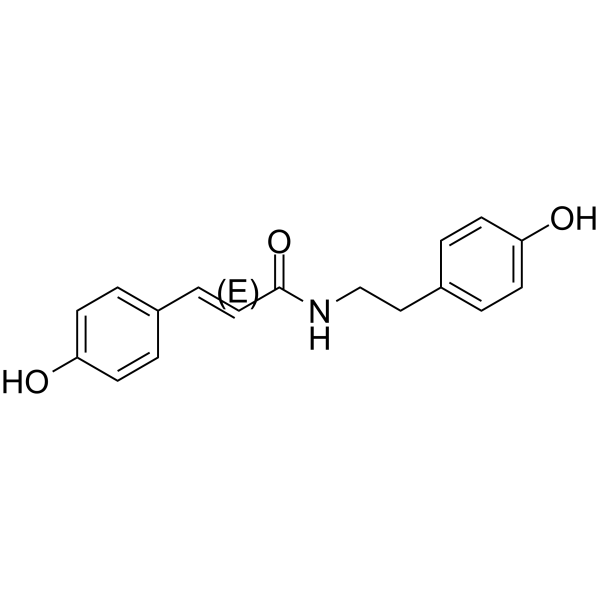上海金畔生物科技有限公司提供天然产物萜类及其苷类Terpenoids and Glycosides。
β-Caryophyllene (Synonyms: β-石竹烯; (-)-(E)-Caryophyllene; (−)-β-caryophyllene; (−)-trans-Caryophyllene) 纯度: 98.32%
β-Caryophyllene 是一个 CB2 受体激动剂。

β-Caryophyllene Chemical Structure
CAS No. : 87-44-5
| 规格 | 价格 | 是否有货 | 数量 |
|---|---|---|---|
| 500 mg | ¥500 | In-stock | |
| 1 g | 询价 | ||
| 5 g | 询价 |
* Please select Quantity before adding items.
β-Caryophyllene 相关产品
•相关化合物库:
- Natural Product Library Plus
- Bioactive Compound Library Plus
- Anti-Infection Compound Library
- GPCR/G Protein Compound Library
- Metabolism/Protease Compound Library
- Neuronal Signaling Compound Library
- Natural Product Library
- Anti-Cancer Compound Library
- Human Endogenous Metabolite Compound Library
- Medicine Food Homology Compound Library
- Terpenoids Library
- Traditional Chinese Medicine Monomer Library
- FDA Approved & Pharmacopeial Drug Library
- Anti-Pancreatic Cancer Compound Library
- Food Additive Library
- Food-Sourced Compound Library
| 生物活性 |
β-Caryophyllene is a CB2 receptor agonist. |
||||||||||||||||
|---|---|---|---|---|---|---|---|---|---|---|---|---|---|---|---|---|---|
| IC50 & Target |
|
||||||||||||||||
| 体外研究 (In Vitro) |
Among the tested cancer cells, β-Caryophyllene demonstrates selective anti-proliferative effect against three cancer cell lines, namely HCT 116 (colon cancer, IC50=19 μM), PANC-1 (pancreatic cancer, IC50=27 μM), and HT29 (colon cancer, IC50=63 μM) cells, whereas β-Caryophyllene exhibits either moderate or poor cytotoxic effects against ME-180, PC3, K562 and MCF-7. Results show that β-Caryophyllene possesses higher selectivity towards the colorectal cancer cells (HCT 116), with selectivity index (SI)=27.9, followed by PANC-1 and HT 29 cells with SI=19.6 and 8, respectively. The apoptotic index estimated for β-Caryophyllene treatment on HCT 116 cells after 24 h treatment is 64±0.04. β-Caryophyllene at 10 μM concentration, causes significant nuclei condensation after 6 h of treatment. β-caryophyllene exhibits a dose and time-dependent inhibitory effect on the motility of HCT 116 cells[2]. Shanghai Jinpan Biotech Co Ltd has not independently confirmed the accuracy of these methods. They are for reference only. |
||||||||||||||||
| 体内研究 (In Vivo) |
Treatment with β-Caryophyllene at different doses does not show any effects on swimming speed during the test. Oral treatment with β-Caryophyllene ameliorates the rise in β-amyloid deposition in the transgenic mice in a roughly dose-dependent manner, and the two higher doses exhibit almost equal effects in modifying the β-amyloid burden. The number of activated astroglial cells is higher in vehicle-treated mouse brains than in β-Caryophyllene-treated mouse brains with different doses. β-Caryophyllene is effective at reducing the enhancement of the COX-2 protein level found in vehicle-treated APP/PS1 mice[1]. Animals treated with β-Caryophyllene display higher values of object recognition index than their vehicle-treated counterparts [t(14)=4.204, P<0.05]. The total time spent in object exploration during the test trial is not significantly different between β-Caryophyllene-treated and vehicle-treated animals (t(14)=0.5874, P>0.05). Treatment with β-Caryophyllene does not significantly alter these seizure-induced neurochemical changes[3]. Shanghai Jinpan Biotech Co Ltd has not independently confirmed the accuracy of these methods. They are for reference only. |
||||||||||||||||
| 分子量 |
204.35 |
||||||||||||||||
| Formula |
C15H24 |
||||||||||||||||
| CAS 号 |
87-44-5 |
||||||||||||||||
| 中文名称 |
β-石竹烯;β-丁香烯 |
||||||||||||||||
| 运输条件 |
Room temperature in continental US; may vary elsewhere. |
||||||||||||||||
| 储存方式 |
|
||||||||||||||||
| 溶解性数据 |
In Vitro:
Ethanol : ≥ 176.67 mg/mL (864.55 mM) DMSO : 100 mg/mL (489.36 mM; Need ultrasonic) H2O : < 0.1 mg/mL (insoluble) * “≥” means soluble, but saturation unknown. 配制储备液
*
请根据产品在不同溶剂中的溶解度选择合适的溶剂配制储备液;一旦配成溶液,请分装保存,避免反复冻融造成的产品失效。 In Vivo:
请根据您的实验动物和给药方式选择适当的溶解方案。以下溶解方案都请先按照 In Vitro 方式配制澄清的储备液,再依次添加助溶剂: ——为保证实验结果的可靠性,澄清的储备液可以根据储存条件,适当保存;体内实验的工作液,建议您现用现配,当天使用; 以下溶剂前显示的百
|
||||||||||||||||
| 参考文献 |
|
| Cell Assay [2] |
Panel of human cancer cells such as, pancreatic (PANC-1), colorectal (HCT-116 and HT-29), invasive squamous cell carcinoma (ME-180), leukemia (K562), hormone sensitive and invasive breast cancer cell line (MCF-7), and prostatic (PC3) adenocarcinoma cell lines are used. Cells are incubated in a humidified CO2 incubator at 37°C supplied with 5% CO2. Inhibitory effect of β-Caryophyllene on proliferation of the cell lines is tested using the MTT assay. The selectivity index (SI) for the cytotoxicity of β-Caryophyllene is calculated using the ratio of IC50 of β-Caryophyllene on a normal cell line (NIH-3T3) to the IC50 of β-Caryophyllene on cancer cell lines[2]. Shanghai Jinpan Biotech Co Ltd has not independently confirmed the accuracy of these methods. They are for reference only. |
|---|---|
| Animal Administration [1] |
Male double transgenic APP/PS1 mice and wild-type littermates are used. The mice are group housed (3 to 5 animals/cage) with a 12:12-hour light/dark cycle and ad libitum access to food and water. In this experiment, animals are orally treated by gavage with 16, 48, or 144 mg/kg of β-Caryophyllene every morning for 10 weeks starting at the age of 7 months. All vehicle solutions are used for the respective control animal treatments and the Morris water maze test is performed[1]. Shanghai Jinpan Biotech Co Ltd has not independently confirmed the accuracy of these methods. They are for reference only. |
| 参考文献 |
|







